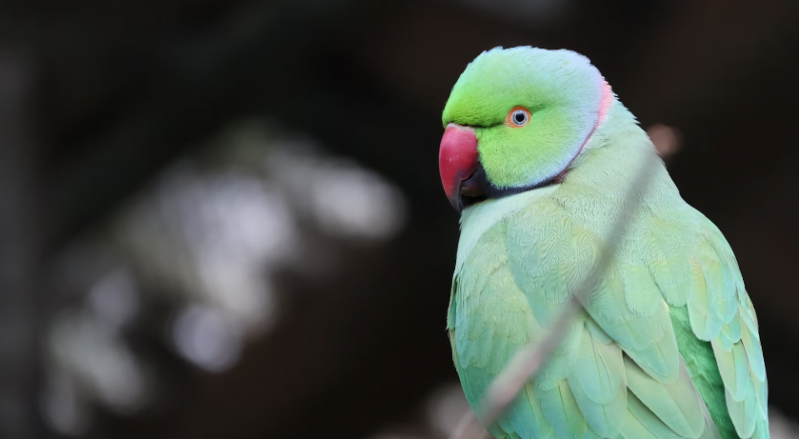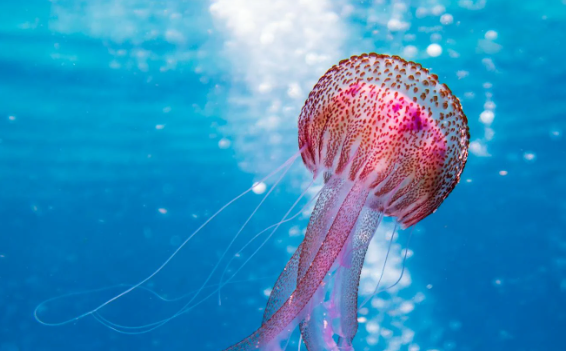The Indian Ringneck Parakeet: How Can You Take Care of One?

© Cyrielle / Unsplash
Are you considering adopting an Indian Ringneck Parakeet as a pet? The Indian Ringneck Parakeet is a popular choice for bird enthusiasts due to its striking colors and playful personality. These beautiful birds make wonderful companions, but they also require specific care and attention to ensure they thrive in your home. Many people underestimate the level of commitment and knowledge required to properly care for these birds. However, it can get easier and safer if you know how to properly take care of them. Here is how you can get started.
What Is an Indian Ringneck Parakeet?
The Indian ringneck parakeet is a popular and beautiful pet bird known for its vibrant coloring. While it may not be suitable for everyone due to its need for attention and care, it can be a highly social and rewarding companion for the whole family. With its bright lime green body, blue tail feathers, and yellow under the wings, this species is visually striking. Indian ringneck parakeets are fond of talking and enjoy mental stimulation, making training an enjoyable experience.
Characteristics of an Indian Ringneck Parakeet
The Indian ringneck parakeet, a subspecies of the rose-ringed parakeet, originates from Ceylon and is found across Asia, particularly in India, Pakistan, Sudan, and the Middle East. They inhabit lightly wooded and farmed areas, often living in flocks of over 100 birds, reflecting their social nature.

Indian ringneck parakeets have been kept in captivity since 200 BC. They gained sacred status in India due to their ability to mimic human language, which was recognized by religious leaders. Wealthy Indian royals kept them in decorative cages, valuing them for their colors and charming personalities.
How to Take Care of an Indian Ringneck Parakeet
Here are some things to know before you decide to keep this gorgeous bird as a pet:
Fun and Friendly Pets
With proper care and affection, Indian ringneck parakeets can easily become cherished companions within a family. They thrive on learning and are highly intelligent, often developing extensive vocabularies and excelling in bird tricks when challenged by their owners.
Keep Bowls Clean
Regular maintenance is key for keeping your Indian ringneck parakeet’s environment clean. Clean food and water bowls daily, perches and toys weekly, and the floor monthly. Annually, take everything outside for a thorough hosing down.
Buy a Big Cage
The cage for an Indian ringneck parakeet should be spacious enough to accommodate its long tail and provide room for hopping and playing. Ensure the bar spacing is narrow enough (ideally 1/2-inch to 5/8-inch) to prevent the bird from getting stuck or escaping.

Look Out for Aggressive Behavior
When dealing with aggressive behavior in an Indian ringneck parakeet, avoid scolding as it may lead to lasting fear. Instead, opt for ignoring negative actions and positively reinforcing good behavior to effectively manage the bird.
Fun Facts That Make Them Even Quirkier
Want to learn more about this colorful friend? Here are some fun facts that will make you love these birds even more:
1. They Are Rebels
While Indian ringneck parakeets are generally not as challenging as their reputation suggests, they can be difficult during adolescence. Young ringnecks, typically between 4 months and 1 year old, may go through a “bluffing” phase marked by increased aggression and resistance to interaction due to hormonal changes. Avoiding interaction during this phase can worsen the behavior. The key is to persistently bond with the bird and reinforce positive behaviors, as this phase usually lasts only a few months.
2. They Can Be Any Color of the Rainbow
Wild Indian ringneck parakeets typically exhibit a bright green coloration with blue tail feathers and yellow under their wings. Males also feature black and rose rings around their necks and facial markings. However, selective breeding has produced various color mutations within the species, including blue, yellow, and white dominant colors, among other striking combinations. These mutations have become popular in many places, sometimes surpassing the popularity of the traditional green ringnecks.

3. They Can Talk to You for Hours
Opting for this pet bird increases the likelihood of having a talkative companion, as they are renowned for their ability to mimic human speech. These birds were once revered for their clear speech, with historical accounts of them repeating prayers from Indian gardens. Known for their comically high-pitched voices, ringnecks can learn dozens if not hundreds of words, usually beginning to talk between 8 months and 1 year old. Regular interaction and conversation with their human companions facilitate their quick learning.
Are you looking to adopt an Indian Ringneck Parakeet as a pet?
You might also want to read: Have You Ever Seen a Shoebill Bird Before?



